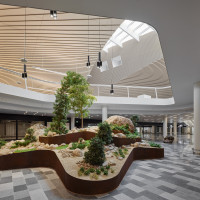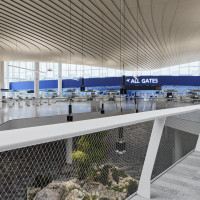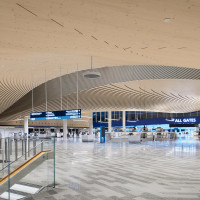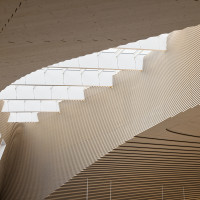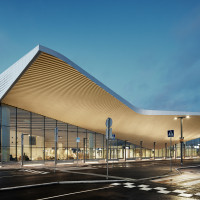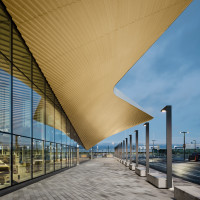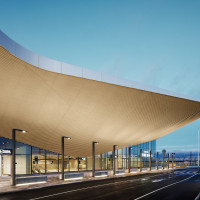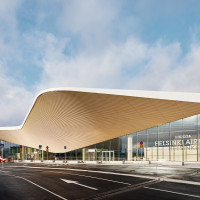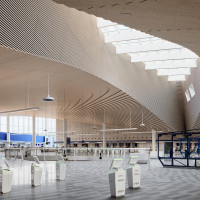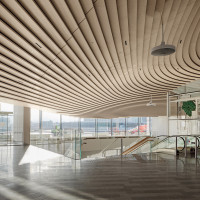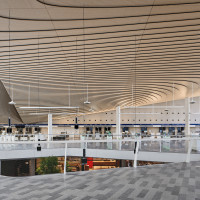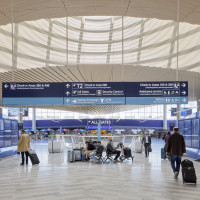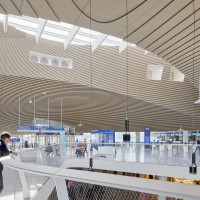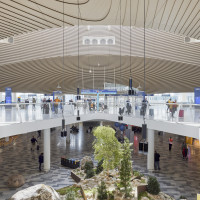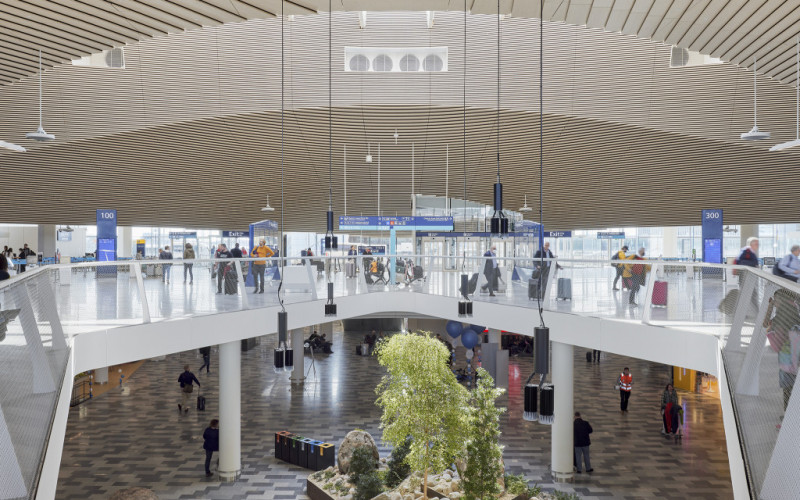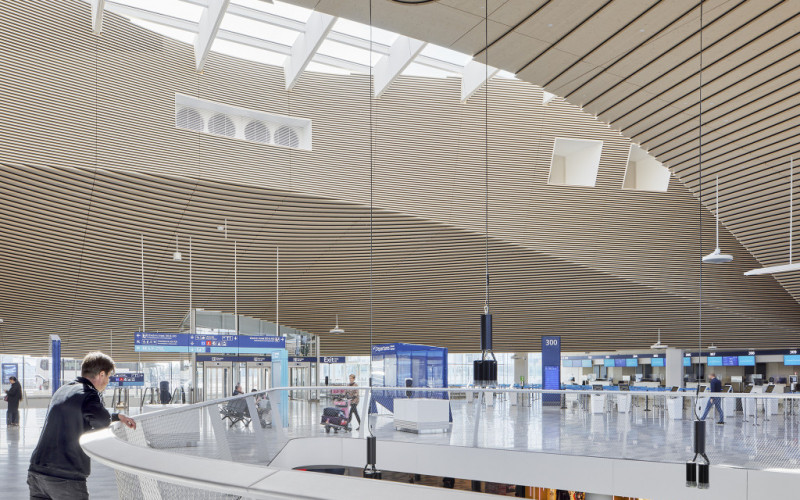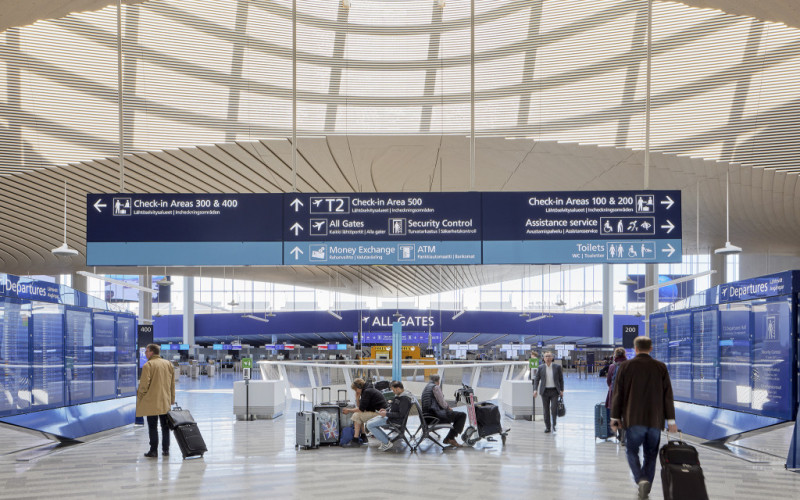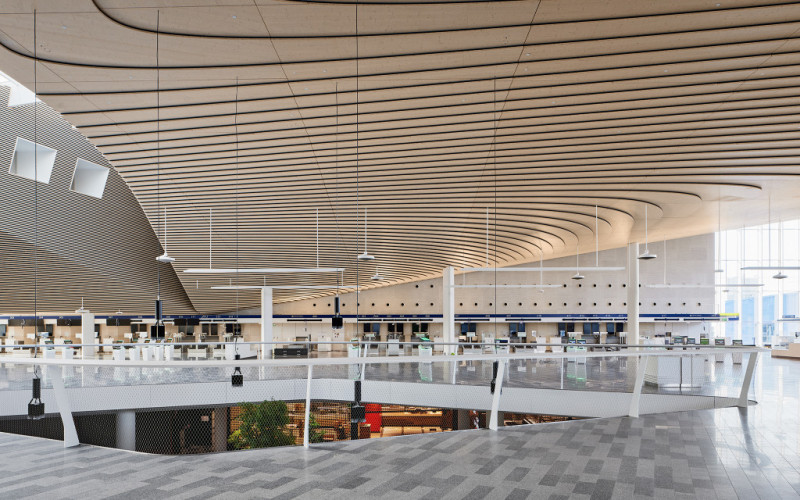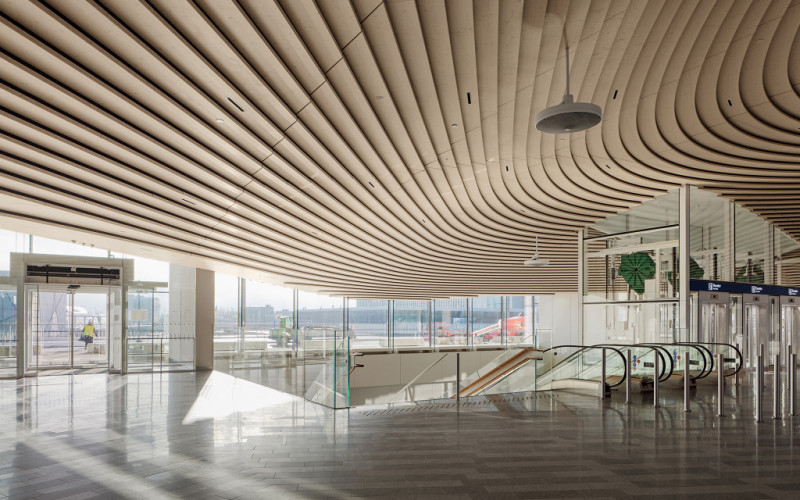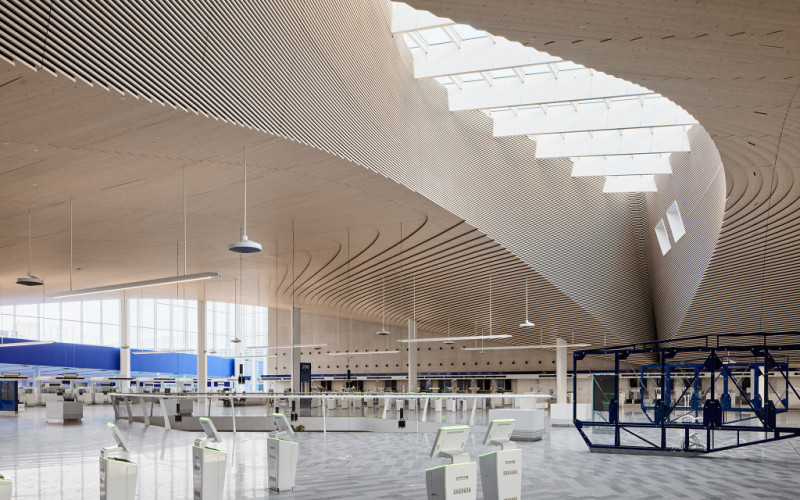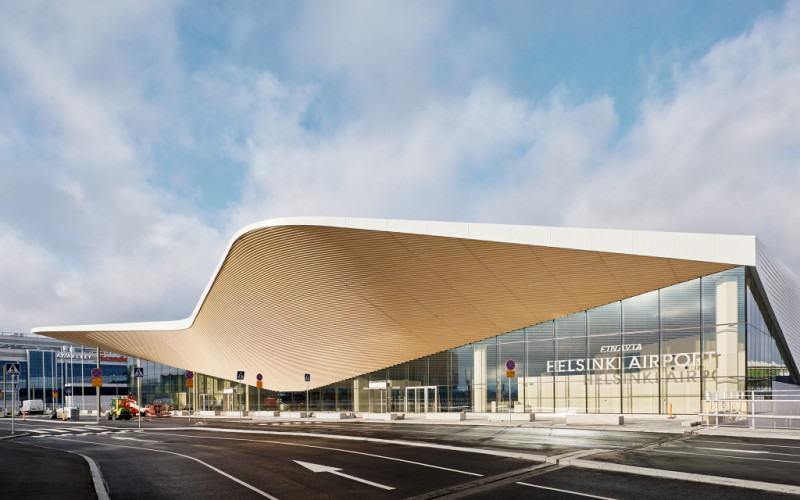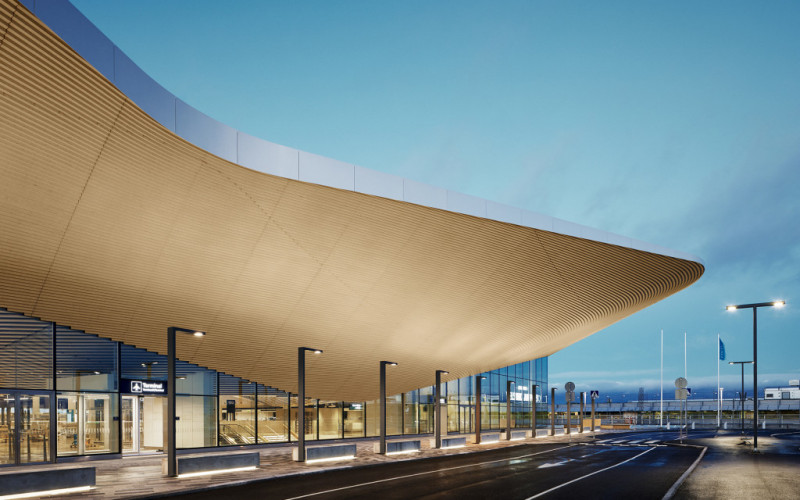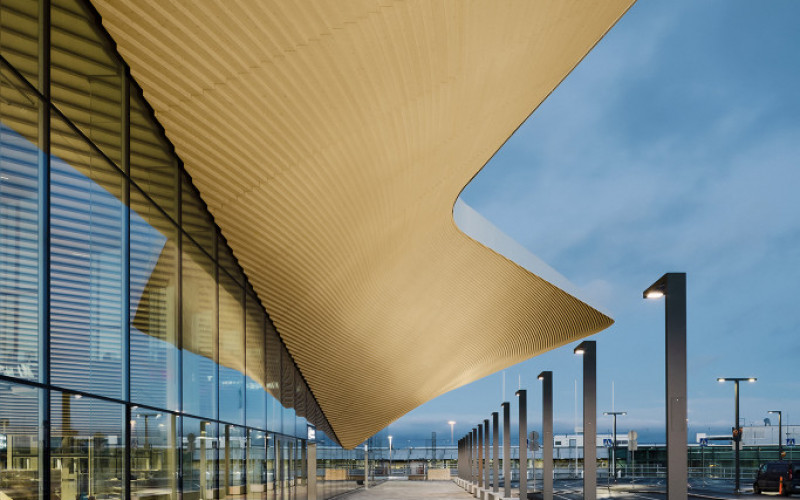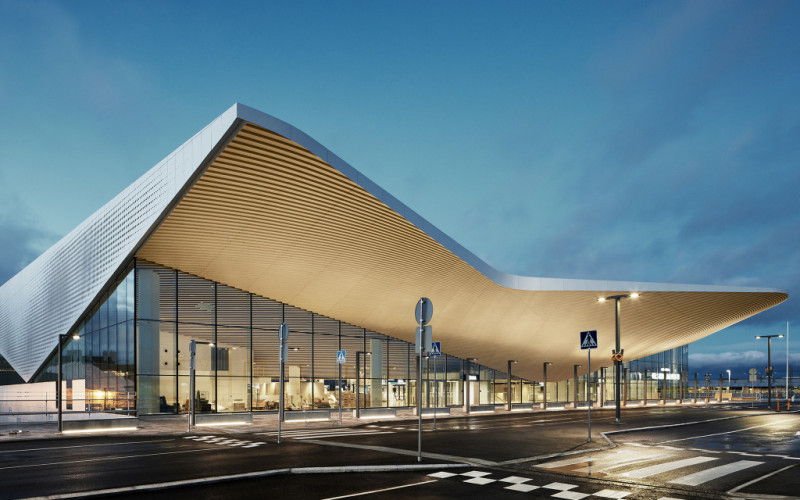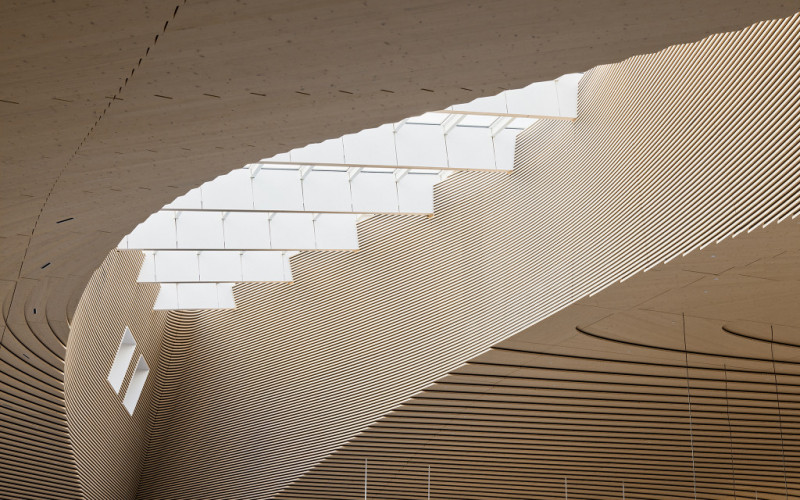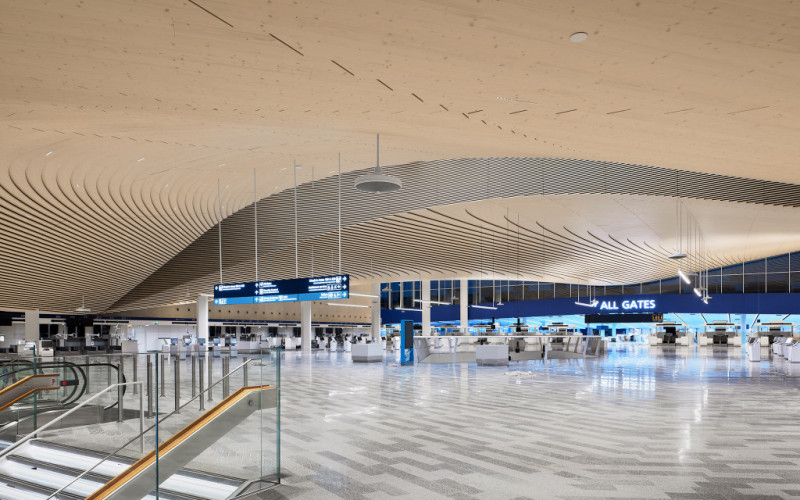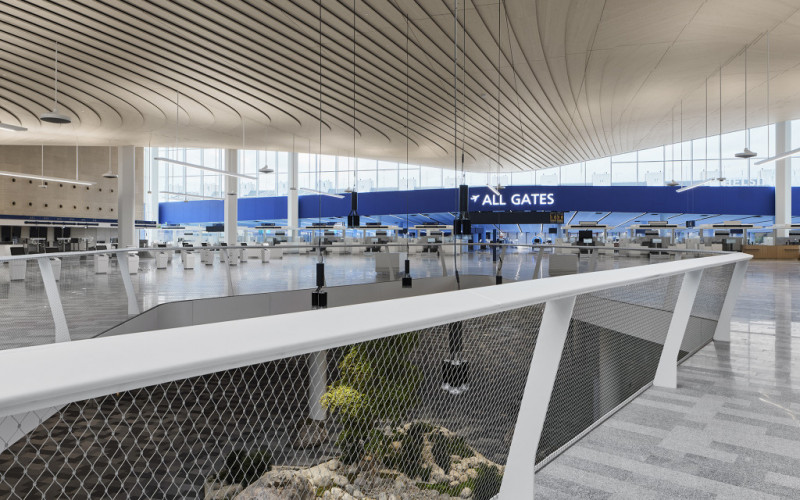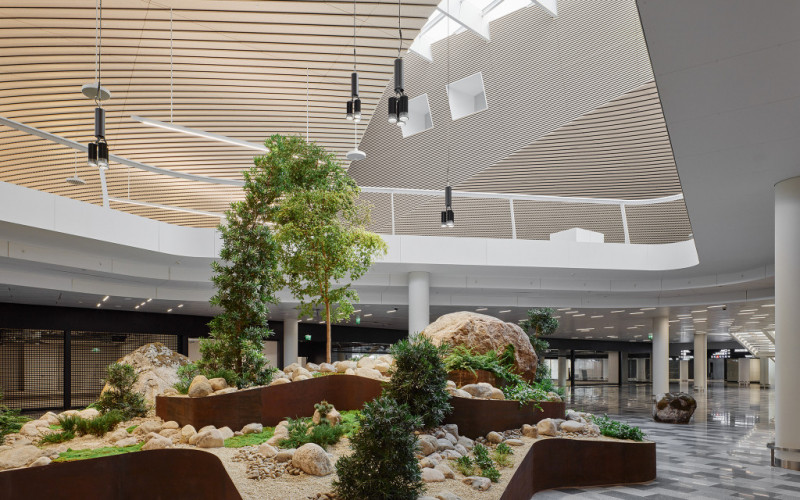ALA HELSINKI AIRPORT
The styled, light, and airy ceilings of the older sections of the Helsinki Airport have been joined by the new departure hall’s wooden ceiling, which shares the same playful lightness of its older companion yet manages to appear robust or even massive.
Thanks to the moulded design of its surface, the thick wooden ceiling appears to be flying, defying common sense much like the sight of a jumbo jet taking off. The free-form surfaces come together to create a stunning whole that has a dominant presence in the interior architecture, particularly in the departure hall directly underneath. An opening cut between the departure hall and the arrivals hall below gives arriving passengers a glimpse of the new ceiling, which also extends out past the building’s glass façade to form a large canopy over the entrance. Its magnitude makes the entrance easy to find, and the thickness of the rest of the ceiling is also apparent in the façade, the middle of the departure hall, and the deep recess of the skylight.
The ceiling’s wooden elements are made from Finnish spruce. Smooth boards cut into curved shapes were used to create the ceiling’s wave-like surface with contoured edges. The effect resembles a three dimensional map turned on its head or an abstract natural landscape, and directs the gaze of passengers upwards, to the sky above the runways.
Steel structures are used to create the canopy over the entrance and the long spans that make the lobby’s large open space possible. These structures are hidden inside the ceiling spaces, as are the ventilation plant room.
The moment travellers set foot indoors, they have a clear line of sight to the blue security check area at the end of the departure hall. The exterior surfaces of this section of the building also have the same blue shade. The chosen colour serves two purposes: it helps travellers spot the security area from far away and calms them during stressful security checks.
The wooden ceiling is split into three slightly different main sections: the overall wooden ceiling, the walls of the large skylight, or oculus, and the ceiling of the outside canopy. The ceiling is completely free-form, which added its own challenges to both planning and construction. The free-form surfaces visible to travellers are created from horizontal, partially overlapping panels. Acoustic wool battens have been installed in the horizontal gaps between the panels to improve the acoustics.
Rhinoceros design software was used with the Grasshopper plug-in to algorithmically model the lower surfaces of the wooden ceiling panels. This combination allowed the designers to manage the complex geometry and to update the model easily as the plans evolved. The wooden ceiling manufacturer designed the actual construction elements that are behind the visible surfaces. These pre-fabricated elements were installed individually at the site by raising them to ceiling height. To model the elements, the manufacturer used the Creo software package, which provided the data needed for CNC machining and fastening.
One standard-sized ceiling element is approximately 3.2 x 6.4 m in size. In each element, each wooden component has a unique geometry. The ceiling panels are cross-laminated multi-layer wooden boards (Rema boards) with a glulam frame. To ensure accurate dimensions, CNC machining was used to make the wooden components. The openings required for the building technical services were mainly pre-drilled into the wooden ceiling panels. Although the designers and the wooden ceiling manufacturer produced their models separately, the work was regularly harmonised in a composite data model. There are a total of 461 elements. Installation work took 10 months.
Each element and panel of the wooden ceiling is unique, with no two parts of the ceiling boards were used to give the ceiling a look of handmade carpentry, and the wood grain has been matched with care to the geometry of the roof. Visually, the ceiling has a unified feel thanks to the uncompromising finishing and uniform surface treatment. All in all, the project has shown that a challenging and wondrous piece of wooden art can be “productised” for manufacturing when the preparations are done well.
Raision Puusepät, the manufacturer of the ceiling elements, joined the project’s planning and construction alliance early on to help design the wooden ceiling. Once the design was complete, Raision Puusepät started planning the work phase. Such an unconventional ceiling shape was too challenging for traditional carpentry, but their 3D design expertise made it possible to produce the needed construction elements with modern machining techniques. CNC machining based on the company’s 3D modelling inputs produced the ceiling geometry precisely according to plan, down to the last millimetre. There was also a structural challenge embedded in the ceiling work requirements: the contract included responsibility for the wooden ceiling’s structural design, which meant taking ownership of ensuring the structure was long-lasting. The ceiling needed to be durable and easy to maintain, and it had to handle humidity. This set the parameters for the element frames, resulting in a safe, light structure that hangs from steel supports.
The carpentry contractors also had their own ambitious goal of making the wooden ceiling look like traditional carpentry. To make this possible, they placed particular importance on the dimensional precision of the components and elements, the uniformity of the surface treatment, and installation safety. Special attention was also paid to work ergonomics during production since the individual parts alone weighed dozens of kilogrammes, with completed elements coming in at about 800 kilograms.
Special innovations were needed to form these robust elements into a ceiling that appears delicate and light. Behind the surface, each structural part required plenty of design work and a willingness to think outside the box. being the same.
